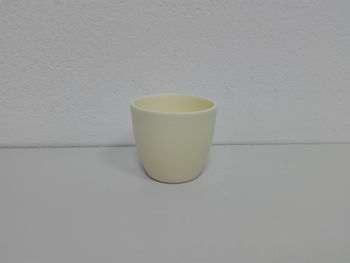Difference between revisions of "Crucible"
Diachrynic (Talk | contribs) (→DIY crucible) |
|||
| (2 intermediate revisions by one other user not shown) | |||
| Line 4: | Line 4: | ||
==General== | ==General== | ||
| − | Crucibles are cup-shaped containers, some lidded other not. They are made of a heat resistant materials, such as ceramic, metal (alloys, platinum-group or refractory metals) or certain oxides (alumina, quartz, zirconia), carbides ([[tungsten carbide]]), nitrides (aluminium nitride). | + | Crucibles are cup-shaped containers, some lidded other not. They are made of a heat resistant materials, such as ceramic, metal (alloys, platinum-group or refractory metals) or certain oxides ([[aluminium oxide|alumina]], quartz, zirconia), carbides ([[tungsten carbide]]), nitrides (aluminium nitride). |
==Materials used and their performance== | ==Materials used and their performance== | ||
===Alumina=== | ===Alumina=== | ||
| − | Good for high temperatures, not compatible with alkali hydroxides or molten bisulfates. | + | Good for high temperatures, not compatible with molten alkali hydroxides or molten bisulfates. |
===Clay graphite=== | ===Clay graphite=== | ||
| Line 47: | Line 47: | ||
Graphite crucibles can be made very easily by drilling a precise hole in a solid graphite cylinder. | Graphite crucibles can be made very easily by drilling a precise hole in a solid graphite cylinder. | ||
| + | |||
| + | Stainless steel cups sold for camping double very well as large crucibles. Regular steel cans like tall cookie or coffee cans can also make for a suitable crucible. | ||
==Projects== | ==Projects== | ||
| Line 54: | Line 56: | ||
==Safety== | ==Safety== | ||
| − | Ceramic crucibles cool slower compared to their metal counterparts, and one may get burned if | + | Ceramic crucibles cool slower compared to their metal counterparts, and one may get burned if they're touched without proper protection. |
Ceramic crucibles may crack if they're not heated uniformly. | Ceramic crucibles may crack if they're not heated uniformly. | ||
Latest revision as of 20:26, 14 August 2023
 |
This article is a stub. Please help Sciencemadness Wiki by expanding it, adding pictures, and improving existing text.
|
A crucible is a container, usually cup-shaped, capable of withstanding high or very high temperatures. Crucibles are commonly used for melting various materials such as metals, glass, organic compounds, as well as for calcination and reactor for high temperature chemical reactions.
Contents
General
Crucibles are cup-shaped containers, some lidded other not. They are made of a heat resistant materials, such as ceramic, metal (alloys, platinum-group or refractory metals) or certain oxides (alumina, quartz, zirconia), carbides (tungsten carbide), nitrides (aluminium nitride).
Materials used and their performance
Alumina
Good for high temperatures, not compatible with molten alkali hydroxides or molten bisulfates.
Clay graphite
Excellent for melting metals with high melting point up until iron. Displays excellent thermal shock resistance. Prolonged use will cause its outer form deform and become glassy, though this isn't a problem. If it cracks, it will self-heal if strongly heated.[1]
Fused quartz
Useful to temperatures up to 1,200 °C and immune to oxidizing reagents. Not compatible with alkali or alkaline metals.
Graphite
As carbon has the highest boiling point of all nonmetals, it can be used for achieving very high temperatures. However, it may react with molten iron and if the atmosphere is too oxidizing it may burn.
Iridium
One of the best types of crucible, displays excellent properties at high temperatures as well as good chemical resistance, though molten alkali will affect it. Main disadvantage is price, they're very expensive.
Magnesia
Good for temperatures up to 2,300 °C and immune to molten alkali.
Nickel
Good performance at high temperatures, but will oxidize if heated too much in air.
Stainless steel
Used mostly for temperatures up to 1000-1200 °C, these crucibles are good for calcinating organic or inorganic compounds and melting alkali. However, it's very easy to melt them if the flame gets too hot. Also, SS crucibles will oxidize in air if heated too high.
Titanium
Lightweight and chemical resistant, titanium offers good performance at high temperatures.
Tungsten carbide
Excellent thermal resistance and shows good chemical resistance at high temperature.
Others
Fired clay crucibles, such as flower pots can be used as crucibles, but they're prone to cracking.
Availability
Crucibles can be purchased from pottery stores or online.
DIY crucible
Fired clay crucibles are very easy to make. They however, cannot be used at very high temperatures.
Graphite crucibles can be made very easily by drilling a precise hole in a solid graphite cylinder.
Stainless steel cups sold for camping double very well as large crucibles. Regular steel cans like tall cookie or coffee cans can also make for a suitable crucible.
Projects
- Metal smelting
- Calcinate organic compounds
- Grow monocrystals
Safety
Ceramic crucibles cool slower compared to their metal counterparts, and one may get burned if they're touched without proper protection.
Ceramic crucibles may crack if they're not heated uniformly.
